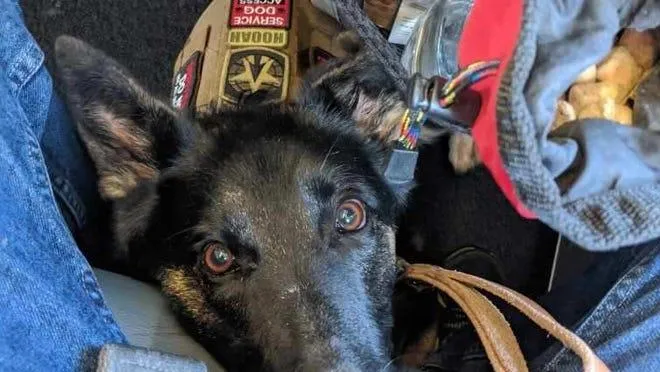All You Need to Know About Emotional Support Animals on Airlines
If you’re traveling with an emotional support animal, knowing which airlines will accommodate them is crucial. With many pets prohibited from cabins, having an ESA designation can make flying much smoother. However, policies vary widely between carriers. This comprehensive guide reveals the current rules for all major U.S. airlines.
What is an Emotional Support Animal?
An emotional support animal (ESA) is any animal that provides therapeutic benefit to its owner through companionship and affection. Simply put, these animals are prescribed by a licensed mental health professional to lessen symptoms of a diagnosed disability like depression, anxiety, phobias, PTSD, and more. Unlike service animals trained for specific tasks, ESAs don’t need training to perform duties. Their mere presence aids their handlers’ well-being and ability to function.
Under the Fair Housing Act and Air Carrier Access Act, ESAs are legally allowed in non-pet housing and cabins of planes if accompanying their owners. Airlines must permit these animals to travel as long as basic documentation and health/behavior requirements are met. However, some carriers are stricter than others when it comes to their ESA policies.
Major Airlines’ Emotional Support Animal Policies
- Delta: Delta accepts ESAs in cabins for a fee on both domestic and international routes. A veterinary health form and letter from a licensed mental health professional are required at least 48 hours before travel.
- American: American allows ESAs to fly free in cabins on domestic flights. International routes may incur a charge. Documentation must be provided at least 48 hours ahead of time.
- United: United has no pet carriers permitted in cabins. Only ESAs under 20 pounds can travel for free on board. Larger ones qualify for cargo hold transportation with their owners in the same aircraft cabin.
- Alaska: Alaska Airlines only accepts ESAs that fit under the seat in front. They must remain there with no special accommodations like food/water service.
- Southwest: Southwest Airlines accepts ESAs and charges no pet fees. Animals must remain on floor or in carrier under seat for entire flight.
Tips for Flying with an Emotional Support Animal
While most major airlines accommodate ESAs, passengers should ensure their animal complies with these essential requirements:
- Written letter from a licensed mental health professional on official letterhead dated within one year.
- Veterinary health form showing ESA is up to date on vaccinations and in good health.
- ESA must be leashed, caged, or otherwise under control at all times.
- Handler takes full responsibility for animal’s behavior, hygiene, and waste disposal.
- Animal is trained to remain calmly at handler’s feet, stay still, and not disrupt other passengers.
It’s also highly recommended to check with airlines directly well in advance for their latest ESA policies. Many travelers have faced issues bringing undocumented animals on board or not knowing size/breed restrictions. Communicating needs clearly avoids potential problems. With preparation, flying with an ESA should go smoothly.

My Experience Flying with an Emotional Support Dog
As someone relying on an ESA for anxiety disorder, air travel was always stressful until I got proper documentation for my golden retriever Max. The first flight went amazingly – Max lay calmly beside me the whole trip! But one time I hit a snag not checking Southwest’s new under-seat size rule. Poor Max was too big and had to ride cargo instead of with me. Lesson learned: always double check!
In general, flight attendants have been super nice about Max once they see his vest. Passengers are sometimes curious but give us space. Though an ESA isn’t a service dog, that good boy has definitely helped me cope flying solo for work. I’m grateful airlines make these accommodations possible for folks like me. If only humanity was as accepting as a furry friend!
Frequently Asked Questions
Individuals looking to fly with an ESA often have additional queries. Here are answers to some commonly asked ones:
Do all airlines allow emotional support animals?
No, some smaller regional carriers or overseas airlines have more restrictive policies. It’s best to directly contact the specific airline(s) you’ll be flying before booking travel.
How old does an ESA have to be to fly?
Most airlines require the animal be at least 6 months old, fully house trained, and able to sit/remain still on verbal commands.

Can I bring more than one ESA?
No, the Department of Transportation only allows one ESA per passenger due to space constraints. Extra animals would be subject to checked baggage fees.
Do I need yearly renewal of ESA documentation?
annual renewal is not legally necessary. However, guidelines state documentation should not be over 1 year old to prove ongoing need for an ESA’s presence while flying.
In conclusion, with the proper preparations a passenger’s emotional support animal should be able to travel alongside them stress-free on any major U.S. airline. But these terms are always subject to change, so double checking policies personally is the safest approach. Overall, most carriers aim to accommodate ESAs as a reasonable accommodation for travelers with diagnosed disabilities.
Major Airlines’ Policies on Emotional Support Animals
| Airline | Emotional Support Animal Allowed | Advance Notice Required | Age Restrictions | Type Restrictions |
|---|---|---|---|---|
| American Airlines | Yes | 48 hours | None | Dogs and cats only |
| Delta Airlines | Yes | 48 hours | 8 weeks or older | Dogs andcats only |
| United Airlines | Yes | 48 hours | 8 weeks or older | Dogs,cats, and miniature horses |
| Southwest Airlines | Yes | 48 hours | None | Dogs and cats only |
| JetBlue | Yes | At least 48 hours | None | Dogs and cats only |
FAQ
-
Which airlines allow emotional support animals?
Most major airlines will allow emotional support animals, like dogs and cats, to fly in the cabin with their owners. The animal needs to be trained and properly behaved. Airlines with established emotional support animal policies include Delta, American, United, and Alaska. At the same time, some smaller regional carriers might not have the same guidelines.

-
Do I need any documents for an emotional support animal?
To fly with an emotional support animal, you will need documentation from a licensed mental health professional. This is often called an emotional support animal letter. The letter needs to confirm you have a recognized disability and explain how the animal assists or comforts you. Without this letter, airlines can treat your pet like regular luggage in the cargo hold.
-
Are there size or breed restrictions for support animals?
While there are no blanket breed bans, some dogs or other pets might not be suitable due to size or behavior issues. The emotional support animal should fit comfortably on your lap or at your feet without taking another passenger’s seat. Aggressive breeds are also a no-no for air travel. The bottom line is your critter needs to be properly trained and calm.
-
Can an airline deny my emotional support pet?
It’s possible but not common. Airlines will only deny emotional support animals that display unsafe behavior, like growling, biting or showing signs of aggression. The animal also needs to be housebroken, and under your control at all times. If airlines have doubts about the animal’s abilities, they might request additional documents from your doctor. Otherwise, they are required by law to honor support animal requests.
-
What is the difference between an ESA and a service animal?
Service animals help people with disabilities, like seeing eye dogs. By law, they must be allowed anywhere their owners go. Emotional support animals, on the other hand, are meant to ease anxiety disorders. Their presence just needs to be accommodated by airlines and landlords. Unlike service animals, ESAs don’t undergo special training, so some question if they deserve the same access rights everywhere. It’s a murky issue.
-
How can I prepare my ESA for air travel?
Before your flight, practice keeping your animal contained by your seat on buses, trains or in other public places first. Also accustom them to noises like engines and overhead compartments shutting. Consider sedation if your pet tends to be anxious or loud. Bring familiar toys, bedding or treats to make them feel more at ease. You can also try associating travel gear like harnesses or carriers with positive play to avoid freak outs. With some training, flying can be less stressful for everyone!

-
Is it a good idea to use an ESA for air travel?
When properly trained, emotional support animals can make the travel experience less frightening or depressing for many. However, taking a pet on a plane risks stressing both you and your animal. Flights often get delayed or pets could get restless being confined for so long. Some folks question if that scene is kind to the pooch or cat. It also creeps out the other passengers! So think hard if you really need the critter by your side flying-wise. It’s sort of a tossup.
